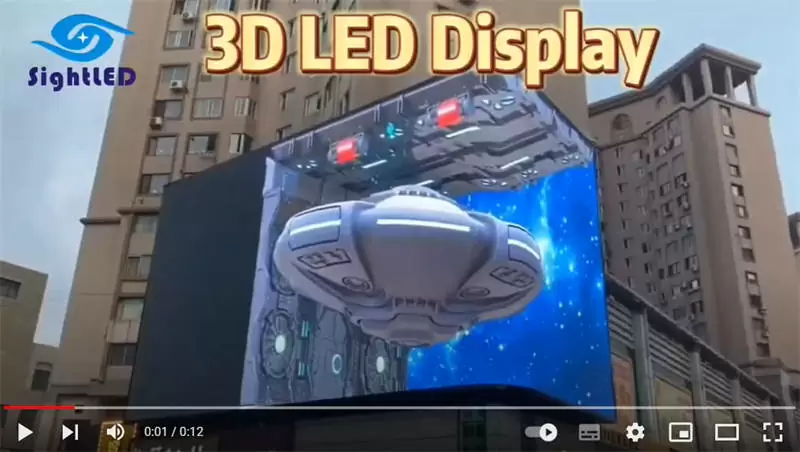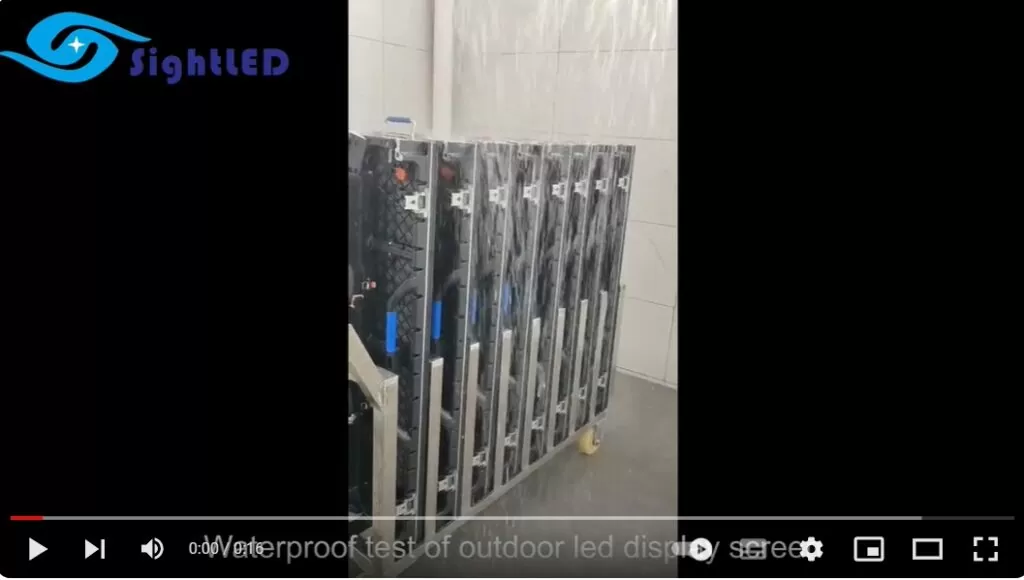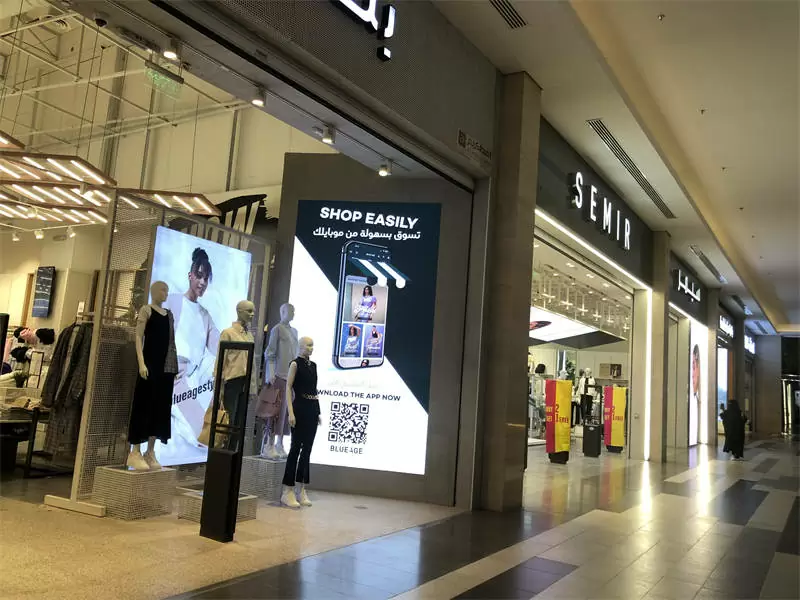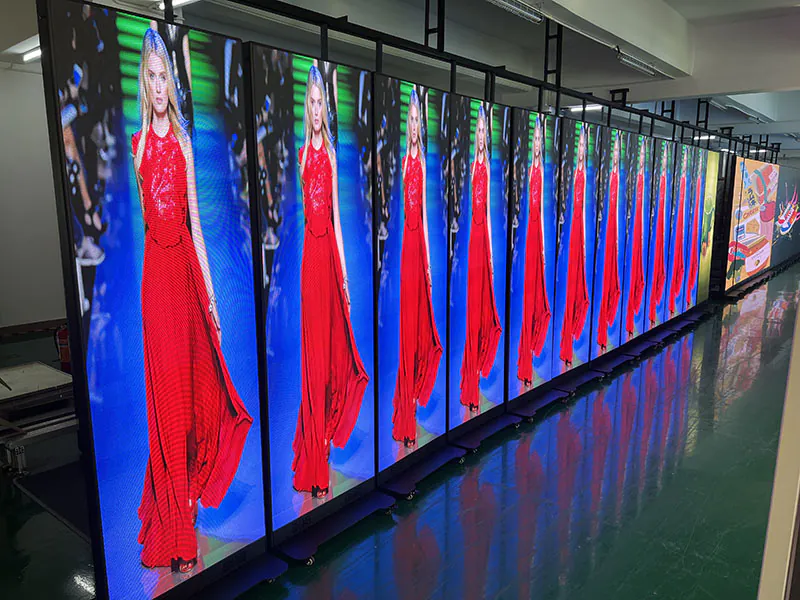
Table of Contents
ToggleWhat is outdoor LED screen?
Outdoor LED displays find diverse applications across various industries and settings, serving as powerful tools for communication, advertising, and engagement. From large-scale billboards along highways and city streets to digital signage in retail environments and outdoor sports stadiums, these displays enable businesses to capture attention, convey messages, and promote products or services effectively. Additionally, outdoor LED displays are utilized for entertainment purposes in outdoor concerts, festivals, and cultural events, enhancing the audience experience with dynamic visuals and immersive storytelling.
Moreover, they play a crucial role in public information systems, displaying real-time updates, emergency alerts, and wayfinding instructions in transportation hubs, city centers, and public squares, contributing to improved communication and safety for communities at large.
Outdoor LED screen price range
The price range for outdoor LED screens can vary widely depending on factors such as size, resolution, brightness, durability, and manufacturer. Generally, smaller outdoor LED screens with lower resolution and brightness levels may start from around $500 to $1,000 per square meter. However, larger screens with higher resolution and brightness capabilities can cost significantly more, ranging from $1,000 to $5,000 or more per square meter. Premium outdoor LED screens with advanced features, such as weatherproofing, high refresh rates, and wireless connectivity, can command even higher prices, sometimes exceeding $10,000 per square meter. It’s important to consider the specific requirements and budget constraints when selecting an outdoor LED screen to ensure the best value for the investment.
Is LED or LCD better for outside viewing?
LED displays are generally better suited for outside viewing compared to LCD displays. This is primarily because LED displays offer higher brightness levels, making them more visible in outdoor environments, especially in direct sunlight. LED displays also have wider viewing angles and better color reproduction, ensuring that content remains clear and vibrant from various viewing positions. Additionally, LED displays are more energy-efficient and have longer lifespans compared to LCD displays, making them a preferred choice for outdoor applications where durability and performance are crucial.
Are LED screens waterproof?
LED screens can be made waterproof, but not all LED screens are inherently waterproof. The waterproofing of an LED screen depends on its design, construction, and the materials used in its manufacturing.
Waterproof LED screens are typically designed with sealed enclosures, protective coatings, and specialized components to prevent water ingress and corrosion. They may also feature waterproof connectors and cables to ensure the entire system is adequately protected from moisture.
Outdoor LED displays, in particular, often incorporate waterproofing measures to withstand exposure to rain, snow, humidity, and other environmental factors. These displays are commonly rated with an Ingress Protection (IP) rating, which indicates the level of protection against solids and liquids. For example, an IP65 rating signifies that the display is dust-tight and resistant to low-pressure water jets, making it suitable for outdoor use in various weather conditions.
It’s essential to note that while waterproofing can significantly enhance the durability and longevity of LED screens, proper maintenance and care are still necessary to ensure optimal performance over time, especially in harsh outdoor environments.
Waterproof test on outdoor led display

What Characteristics Can You Ask for Outdoor LED Screens?
When sourcing outdoor LED screens, you can inquire about various characteristics to ensure they meet your specific requirements and applications. Here are some key characteristics to consider and ask for:
- Weatherproofing: Outdoor LED screens should be weatherproof to withstand exposure to elements such as rain, snow, wind, and sunlight. Inquire about the level of weatherproofing and protection against dust, moisture, and temperature fluctuations.
- Brightness Levels: Outdoor LED screens need to be bright enough to remain visible in daylight and direct sunlight. Ask about the brightness levels (measured in nits) and ensure they meet your visibility requirements for outdoor viewing conditions.
- Resolution and Pixel Pitch: Inquire about the resolution and pixel pitch of the LED screens, which determine the sharpness and clarity of displayed content. Higher resolution and smaller pixel pitch result in clearer images and text, especially when viewed from a distance.
- Durability and Reliability: Outdoor LED screens should be built with durable materials and components to ensure long-term reliability and performance in outdoor environments. Ask about the build quality, robustness, and expected lifespan of the screens.
- Energy Efficiency: Consider the energy efficiency of the LED screens to minimize power consumption and operating costs. Inquire about energy-saving features, such as automatic brightness adjustment based on ambient light conditions, to optimize energy usage.
- Maintenance Requirements: Ask about the maintenance requirements and frequency for outdoor LED screens. Inquire about accessibility for servicing, ease of cleaning, and availability of spare parts to ensure hassle-free maintenance and upkeep.
- Viewing Angle: Outdoor LED screens should offer wide viewing angles to ensure visibility and readability from various perspectives. Inquire about the horizontal and vertical viewing angles to ensure optimal viewing coverage for your audience.
- Integration and Compatibility: Ensure compatibility with existing AV systems, control systems, and hardware components in your outdoor setup. Inquire about integration options, connectivity interfaces, and compatibility with third-party devices and software.
- Customization Options: Depending on your specific requirements and applications, inquire about customization options for outdoor LED screens. Ask about available sizes, shapes, configurations, and mounting options to tailor the screens to your needs.
- Warranty and Support: Verify the warranty coverage and after-sales support provided by the manufacturer or supplier. Inquire about warranty terms, technical support, and service options to address any issues or concerns that may arise after installation.
How Can You Install the LED Displays?
Installing LED displays requires careful planning and execution to ensure optimal performance, safety, and longevity. Here are the general steps involved in installing LED displays:
- Site Survey and Preparation: Before installation, conduct a site survey to assess the installation location and ensure it meets the requirements for mounting the LED display. Prepare the site by clearing any obstructions, ensuring sufficient access for installation equipment, and verifying the availability of power sources and connectivity.
- Mounting Structure Installation: Install the mounting structure or framework for the LED display according to the manufacturer’s specifications and engineering requirements. Ensure that the mounting structure is securely anchored to the building or support structure to withstand wind loads and other environmental factors.
- Power and Connectivity Setup: Connect the LED display to the power source and establish connectivity with control systems, media players, and other devices as needed. Ensure that electrical wiring is properly installed and insulated to prevent short circuits or electrical hazards.
- LED Panel Assembly: Assemble the individual LED panels or modules to form the complete display matrix. Follow the manufacturer’s instructions and guidelines for aligning and securing the panels, ensuring uniformity and consistency in panel placement and orientation.
- Panel Calibration and Testing: Calibrate the LED panels to ensure uniform brightness, color consistency, and proper alignment across the display. Use calibration tools and software provided by the manufacturer to adjust settings such as brightness, color temperature, and color balance. Test the display thoroughly to verify functionality and performance before finalizing installation.
- Content Upload and Configuration: Upload content such as images, videos, text, and graphics to the LED display system and configure playback settings using the control software or interface. Customize display settings such as screen layout, resolution, refresh rate, and scheduling according to the specific requirements and preferences of the installation.
- Final Inspection and Adjustment: Conduct a final inspection of the installed LED display to ensure that it meets quality standards and specifications. Make any necessary adjustments or fine-tuning to optimize performance, readability, and visual impact. Verify that all components are securely fastened and properly connected to prevent issues during operation.
- Training and Handover: Provide training to end-users or operators on how to operate, maintain, and troubleshoot the LED display system. Hand over relevant documentation, manuals, and warranty information, and address any questions or concerns to ensure smooth operation and user satisfaction.
- Maintenance and Support: Establish a maintenance schedule and protocol for ongoing care and upkeep of the LED display system. Monitor performance metrics, conduct regular inspections, and address any issues promptly to minimize downtime and maximize the lifespan of the display.
How to Control Outdoor Advertising LED Display?
Controlling outdoor advertising LED displays typically involves using specialized control systems or software that allow users to remotely manage the content displayed on the screen. Here’s an overview of the steps involved in controlling outdoor LED displays:
- Content Creation: Begin by creating or obtaining the content you want to display on the LED screen. This may include images, videos, text, animations, or any other visual elements you want to showcase in your outdoor advertising campaign.
- Content Management Software: Use content management software (CMS) specifically designed for controlling LED displays. This software allows you to upload, schedule, and manage the content that appears on the screen. It provides features for organizing playlists, setting display schedules, and updating content remotely.
- Connection Setup: Connect the LED display screen to the content management software using a network connection, such as Ethernet or Wi-Fi. Ensure that the display screen is properly configured and linked to the CMS platform to enable communication between the two.
- Content Upload: Upload the desired content to the content management software. This may involve uploading individual media files, creating playlists, or scheduling content to be displayed at specific times.
- Content Scheduling: Use the scheduling features of the CMS to set the timing and duration of each piece of content. You can schedule content to display at different times of the day or week, allowing for targeted advertising campaigns based on audience demographics or viewing patterns.
- Remote Control: Once the content is uploaded and scheduled, use the remote control features of the CMS to monitor and manage the display in real time. This includes starting and stopping playback, adjusting volume levels, and making on-the-fly changes to the content being displayed.
- Monitoring and Maintenance: Regularly monitor the performance of the outdoor LED display to ensure that content is displaying correctly and that the screen is functioning properly. Perform routine maintenance tasks as needed, such as cleaning the screen, updating software, and checking for hardware issues.
By following these steps and using the appropriate software and hardware solutions, you can effectively control outdoor advertising LED displays to deliver engaging and impactful content to your target audience.

SightLED is a professional LED display manufacturer, providing high-quality and customizable indoor and outdoor LED displays for advertising, events, sports, and more. With over 12 years of experience and certifications such as ISO9001-2015, CE, and TUV, we ensure reliable post-sale services and customer satisfaction. Trust us to meet your specific needs and provide long-term quality services
How We Make High-Quality LED Screens
Our advanced production process uses state-of-the-art equipment such as plug-in, surface mount, and wire bonder machines, automatic paint applicators, glue dispensers, and testing equipment.
We rigorously inspect every LED screen before shipment to ensure that they meet the highest standards for performance and reliability.
Explore our video showcase to see firsthand the skilled workforce and advanced machinery that make our LED screens exceptional.





